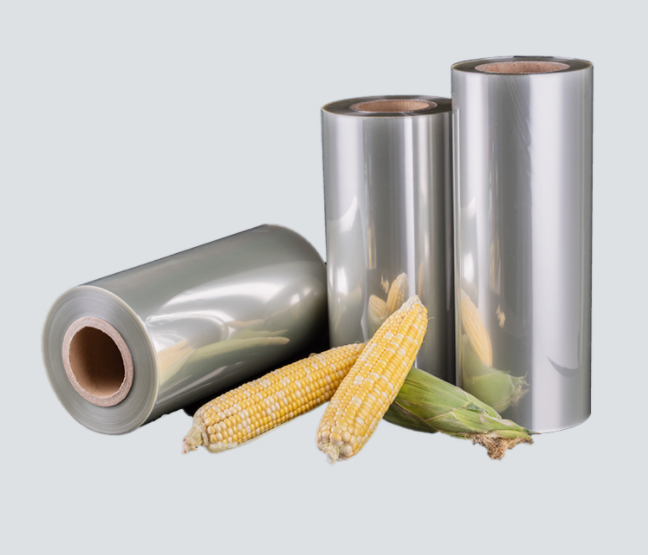WHAT IS PLA FILM?
PLA film is a biodegradable and environmentally-friendly film made from corn-based Polylactic Acid resin.organic sources such as corn starch or sugar cane. Using biomass resources makes PLA production different from most plastics, which are produced using fossil fuels through the distillation and polymerization of petroleum.
Despite the raw material differences, PLA can be produced using the same equipment as petrochemical plastics, making PLA manufacturing processes relatively cost efficient. PLA is the second most produced bioplastic (after thermoplastic starch) and has similar characteristics to polypropylene (PP), polyethylene (PE), or polystyrene (PS), as well as being biodegradeable.
The film has Good clarity、Good tensile strength、and good Stiffness and toughness.Our PLA films are certified for composting according to EN 13432 certificate
PLA film proves to be one of the superior packaging film in flexible packaging industry, and now have been used in packages for flower, gift, foods like bread and biscuit, coffee beans.

HOW PLA IS PRODUCED?
PLA is a polyester (polymer containing the ester group) made with two possible monomers or building blocks: lactic acid, and lactide. Lactic acid can be produced by the bacterial fermentation of a carbohydrate source under controlled conditions. In the industrial-scale production of lactic acid, the carbohydrate source of choice can be corn starch, cassava roots, or sugarcane, making the process sustainable and renewable.
ENVIRONMENTAL ADVANTAGE OF PLA
PLA is biodegradable under commercial composting conditions and will breakdown within twelve weeks, making it a more environmentally choice when it comes to plastics in contrast to traditional plastics which could take centuries to decompose and end up creating microplastics.
The manufacturing process for PLA is also more environmentally friendly than that of traditional plastics made from finite fossil resources. According to research, the carbon emissions associated with PLA production are 80% lower than that of traditional plastic (source).
PLA can be recycled as it can be broken down to its original monomer by a thermal depolymerization process or by hydrolysis. The outcome is a monomer solution that can be purified and used for subsequent PLA production without any loss of quality.
Post time: Jan-31-2023
